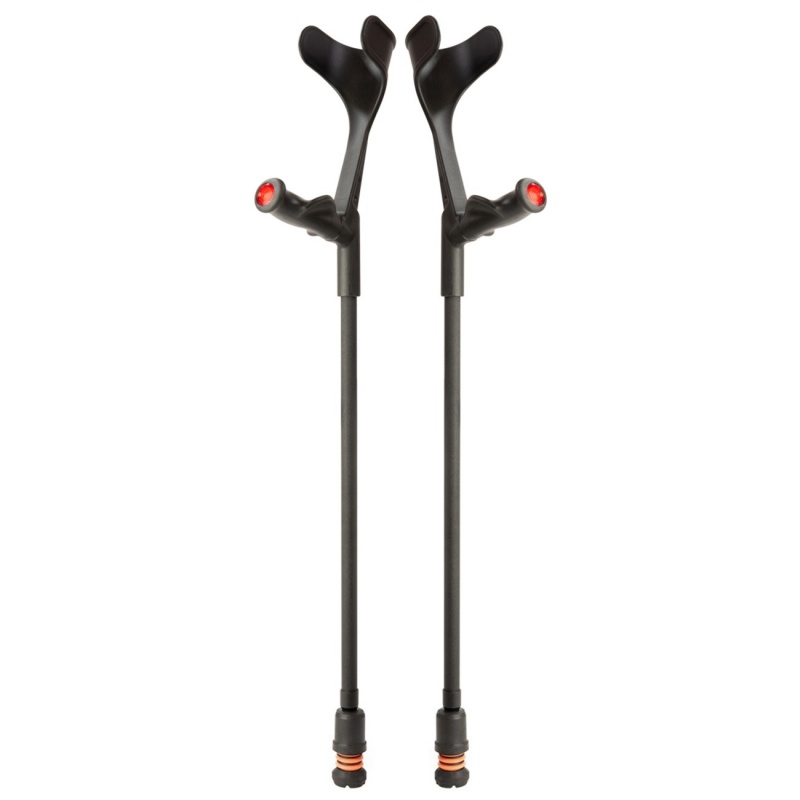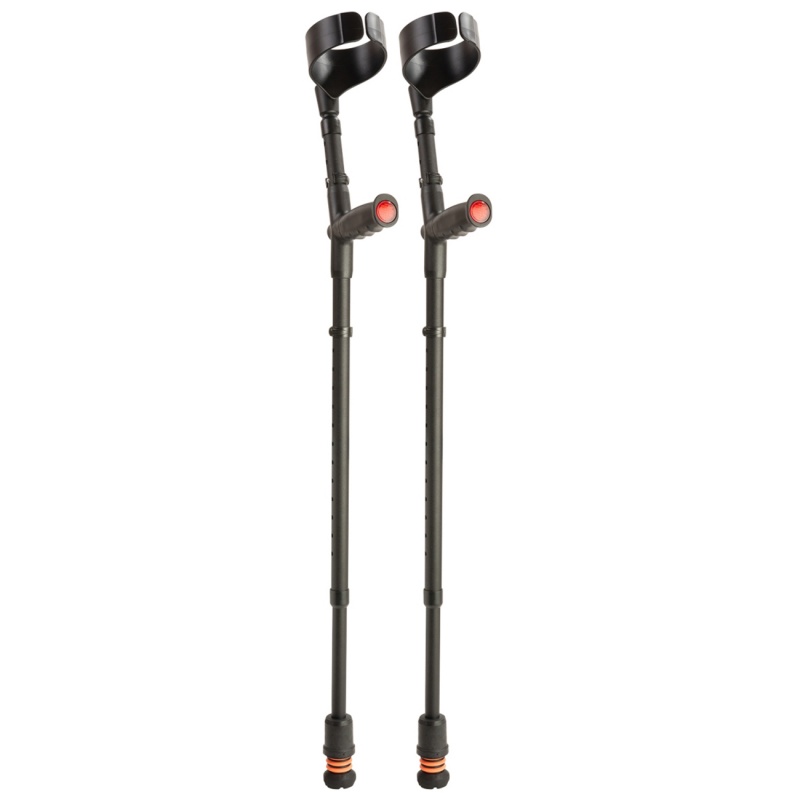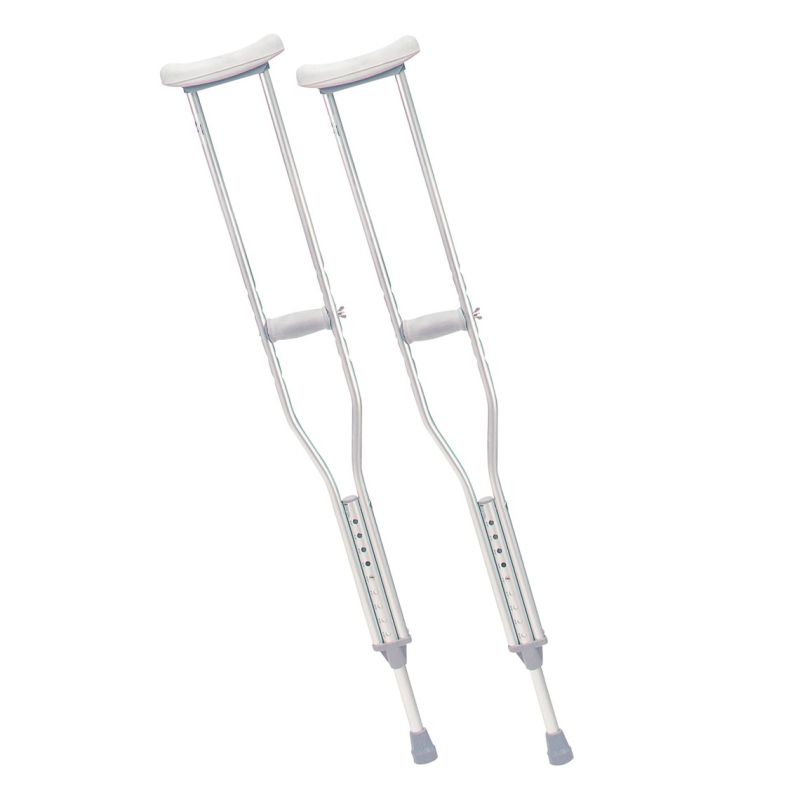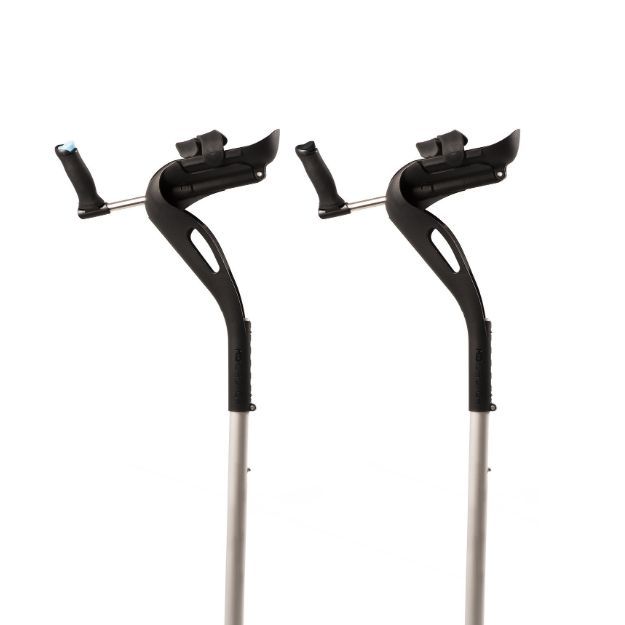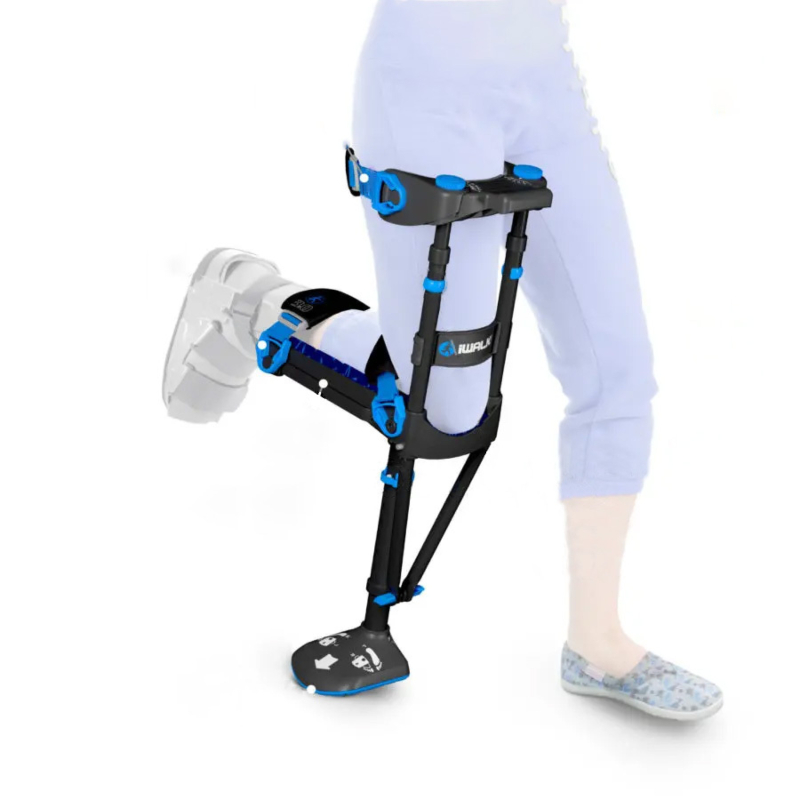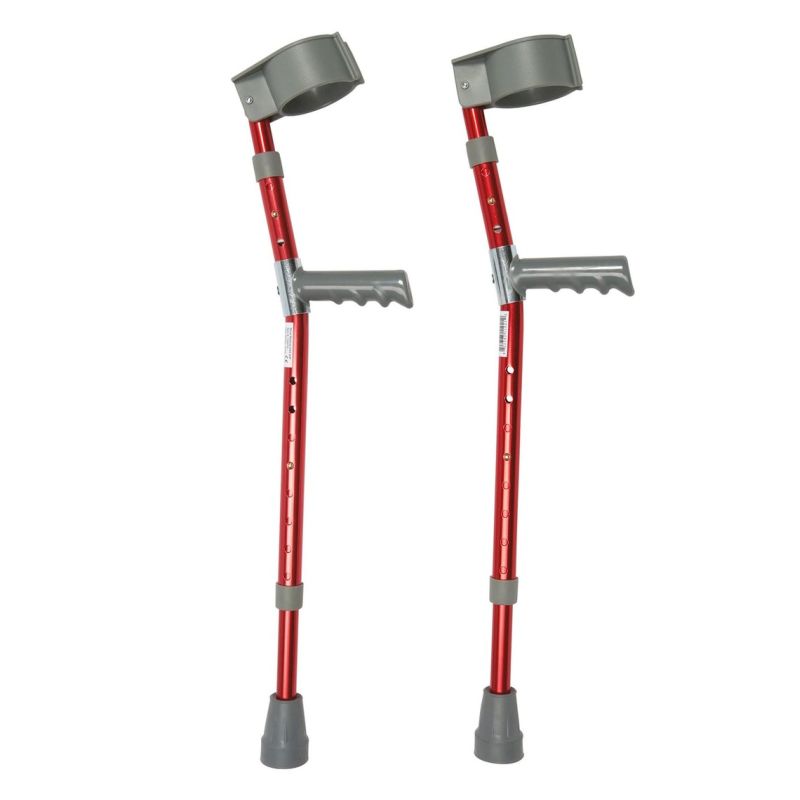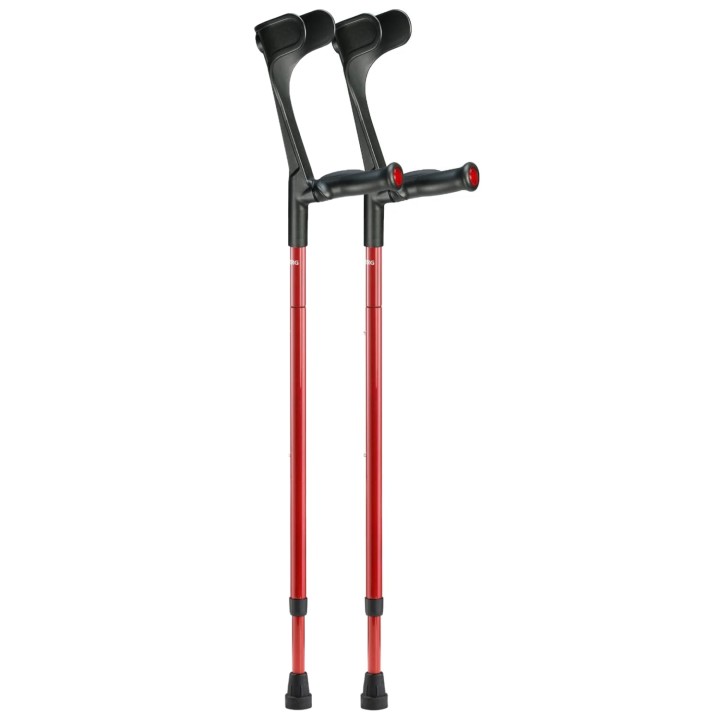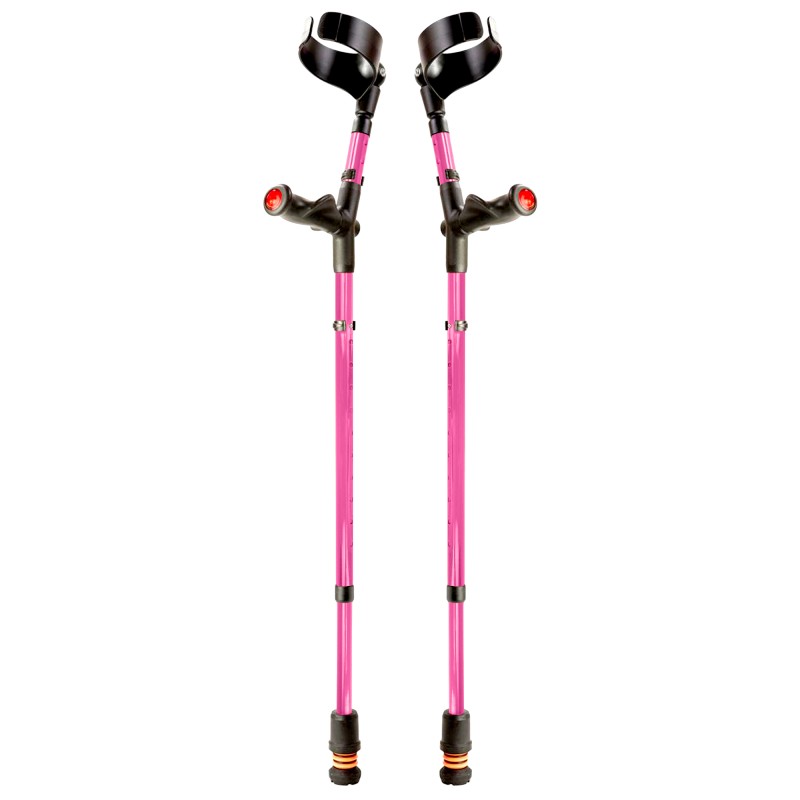How to Choose the Right Crutches
There’s never a good time to need crutches. However, they fulfil an essential task, enabling us to remain mobile as we age or recuperate, allowing our bodies to heal and recover. Just as human beings are unique and different, our needs and requirements as crutch users also vary. The wrong pair of crutches, if not chosen considering pre-existing conditions, can cause more harm than good.
With this informative guide on How to Choose the Right Crutches, we aim to help you navigate the wide array of choices in the market, ensuring you pick a crutch that meets all your needs. No matter what you’re suffering from, this exhaustive guide will help you sift through the choices until you find the right pair that suits you down to a tee.
What Will This Guide Cover?
- Types of Crutches:
- Elbow Crutches:
- Underarm Crutches
- Gutter Crutches
- Hands-Free Crutches
- Children's Crutches
- Folding Crutches
- Colourful Crutches
- Consider the Material
- Crutches Accessories
- What Injuries Require Crutches?
- What To Know Before Making a Decision?
Types of Crutches
There are various walking crutches available and picking the right one is crucial. Using the wrong type can cause nerve damage under your arms and weaken your forearms, wrists, and hands, leading to crutch palsy. The right crutches, however, can prevent these issues and keep you safe. Let's explore the different crutches available below.
Elbow Crutches
Also known as Lofstrand or forearm crutches, these have a plastic cuff that goes around your wrist and forearm. Elbow crutches have angled necks which require you to bend your elbow 15 to 30 degrees and distribute weight across both arms. They are smaller and lighter than underarm crutches, making them a better choice for activities like climbing stairs. You need good arm and core strength to use them, but they help maintain good posture and are safer for long-term use. They come with a cuff that supports the arm just blow the elbow. The cuff can be either Open or Closed.
Best Open-Cuff Crutches
Our Winner: Flexyfoot Comfort Grip Open-Cuff Black Crutches
Why We Love Them...
✔ Easy to pick and put down
✔ Allow easier use of climbing stairs
✔ Distribute weight evenly
Perfect For...
✔ People who prefer more freedom
✔ Patients who find regular crutches painful
✔ Individuals seeking equal weight distribution
Not the Best For...
✘ Users who want to multi-task with their hands (See our solution)
✘ People with arthritic hands (See our solution)
Closed-Cuff Crutches
Our Winner: Flexyfoot Standard Soft-Grip Handle Closed-Cuff Crutches
Why We Love Them...
✔ More securely attached
✔ Allow multi-tasking with hands without losing control
✔ Encourages proper posture
Perfect For...
✔ People who prefer to multi-task
✔ Individuals who want weight distribution along arms
✔ Users who don't want to let go of the crutches
Not the Best For...
✘ Individuals needing both hands on handles (See our solution)
✘ People with no upper body strength (See our solution)
Differences at a Glance
To sum up, the advantages and disadvantages of Open and Closed Cuff Elbow Crutches are shown below:
| Open-Cuff | Closed-Cuff | |
|---|---|---|
| Easier to Let Go in Case of a Slip | ✔ | ✘ |
| Encourages Upright Posture | ✔ | ✔ |
| Fully Encircles the Arm | ✘ | ✔ |
| Requires Upper Body Strength | ✔ | ✔ |
| Need Both Hands on Handles at All Times | ✔ | ✘ |
| Distribute Weight Evenly and Comfortably | ✔ | ✔ |
Underarm Crutches
Our Winner: Drive Medical Aluminium Underarm Crutches for Adults
Why We Love Them...
✔ Don't require upper body strength and balance
✔ Simple and easy to use
✔ Most common and easily available
Perfect For...
✔ Suitable for people who lack upper body strength and balance
✔ Easy to learn how to use
✔ Ideal for short-term use
Not the Best For...
✘ People who travel a lot (See our solution)
✘ Children who might feel them painful (See our solution)
Gutter Crutches
Our Winner: M+D Adjustable Forearm Crutches
Why We Love Them...
✔ Padded forearms for support
✔ Distribute weight evenly
✔ Ergonomic rotating handles reduce shoulder stress
Perfect For...
✔ People with arthritic hands or a weak grip
✔ Users who prefer rotating handles
✔ Individuals wanting adjustable handgrips
Not the Best For...
✘ People wanting easy to use crutches (See our solution)
✘ Individuals wanting freedom to use their hands (See our solution)
Hands-Free Crutches
Our Winner: iWALK 3.0 Hands Free Crutch
Why We Love It...
✔ Knee pads and straps offer support and stability
✔ Allows users freedom to use hands
✔ Requires a single crutch due to ergonomic weight balancing
Perfect For...
✔ Lower leg injuries or surgeries
✔ Users requiring extra knee support
✔ Injuries that require the leg to remain suspended
Not the Best For...
✘ Users with both legs not fully functional (See our solution)
✘ Individuals wanting more freedom (See our solution)
Children's Crutches
Our Winner: Drive Medical Red Aluminium Paediatric Forearm Crutches
Why We Love Them...
✔ Includes comfortable and supportive grips and cuffs for extra safety
✔ Adjustable height makes them suitable for a wider range of ages
✔ Comes in a spirit-red shade for a fun and unique design
Perfect For...
✔ Children suffering from instability or mobility issues
✔ Users with latex allergies as these feature latex-free plastic cuffs
✔ Patients of varying heights requiring height-adjustable support
Not the Best For...
✘ Those seeking an adult pair of crutches (See our solution)
✘ Patients seeking suitable support for arthritis (See our solution)
Best Folding Crutches
Our Winner: Ossenberg Open Cuff Carbon Fibre Folding Comfort Grip Red Crutches
Why We Love Them...
✔ Versatile mobility aids that offer support and stability
✔ Lightweight and easy to carry
✔ Easily disassembled for easy transportation and storage
Perfect For...
✔ Individuals who need to travel regularly
✔ Users who prefer lightweight crutches
✔ Patients with upper body strength
Not the Best For...
✘ Those seeking underarm crutches (See our solution)
✘ Patients seeking suitable support for arthritis (See our solution)
Best Colourful Crutches
Our Winner: Flexyfoot Pink Anatomic Comfort-Grip Double-Adjustable Crutches
Why We Love Them...
✔ Features flexible ferrules to provide a superior grip and a height-adjustable frame
✔ Designed with shock-absorbing ferrules and closed cuffs for ease of movement
✔ Comes in a bright pink shade to lighten up your mood
Perfect For...
✔ Patients suffering from an injured lower limb
✔ Individuals seeking height-adjustable crutches
✔ People seeking crutches that come as a pair
Not the Best For...
✘ Users seeking hands-free crutches (See our solution)
✘ Individuals searching for crutches for children (See our solution)
Consider the Material
For users that have a heavier or lighter body weight, it is essential to use crutches that are designed accordingly to handle their weight. The most common materials for crutches are:
- Aluminium: Aluminium crutches are the most common and are lightweight and durable
- Wood: Wooden crutches may be less expensive but heavier and less durable
- Carbon Fibre: Carbon fibre crutches are the lightest and most expensive
Crutch Accessories To Choose From
There is a wide range of crutch accessories that can enhance the effectiveness and efficiency of both underarm and forearm crutches. They include:
- Ferrules for Crutches: Ferrules are the foundation of your crutches, and a faulty ferrule can result in slips and falls. There are multiple ferrule options from which to choose from for the perfect footing.
- Grips for Crutches: Grips are an important part of the crutch since a rough and uneasy grip can cause discomfort, rashes, and falls. Sturdy, anatomical, ergonomic, comfort, arthritic hand grips can help enhance the experience by allowing easy use of this mobility aid
- Adjustable Crutches: Whether single or double, the adjustable designs allow the user to tailor the crutches to their height for good fits. You can adjust both the height of the grip and the leg of the crutches. This is important because that way you can ensure good walking comfort.
What Injuries Require Crutches?
Crutches can be used to help support your weight as you recover from a variety of short-term injuries and long-term conditions. They are most often used for patients recovering from:
- Broken ankle
- Broken foot
- Sprained ankle
- Stress fracture
- ACL injury or tear
- Achilles tendon injury
- Muscle strain
- Knee injury
- Hip dislocation
- Other leg injuries
What to Know Before Making a Decision
If there's one thing that we've tried to impart through this guide it's that choosing a crutch should never be hasty decision. Whether its an injury or a long-term condition, accept the predicament you're in and then choose a pair that's going to be an extension of yourself, helping you stay mobile in a safe and comfortable manner.
| Underarm Crutches | Elbow Crutches | |
|---|---|---|
| Easily Customisable | ✘ | ✔ |
| Can Cause Pain and Sore Underarms, Wrists and Hands | ✔ | ✘ |
| Improper Use Can Cause Nerve Damage | ✔ | ✘ |
| Most Common Type of Crutches | ✔ | ✘ |
| Require Upper Body Strength | ✘ | ✔ |
| Easier to Master, Take Less Coordination | ✔ | ✘ |
| Encourage Proper Posture | ✘ | ✔ |
| Easier To Use on Uneven Terrain | ✘ | ✔ |
When choosing between underarm or elbow crutches, think about:
- Usage Duration: For long-term use, go for the most comfortable option, as the crutches will act as an extension of your body
- Adjustability: Pick adjustable crutches to suit various needs
- Proper Fit: Make sure the handgrips are at wrist level and the cuffs are 2 inches below your elbows when bent
Ultimately, the decision on which type of crutch to choose lies with you. When aligned with your needs and if used correctly, crutches can help you rediscover your joy for walking and regain your lost confidence in yourself. If you're still curious about crutches, why not have a look at our full range of crutches.
Have any questions about our crutches? Or just something to add? Let us know in the comments below or reach out on Twitter or Facebook!

